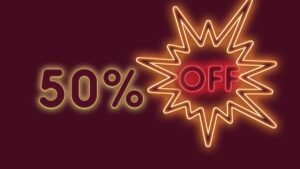Can light be used to treat cancer? This China-backed Aussie biotech thinks so

The ASX has okayed a deal allowing a Chinese investor buy up to 70 per cent of tiny biotech Invion.
The deal had raised eyebrows at the securities exchange, which queried whether the buyer, Chinese tech investor Cho Group, was in fact trying to do a backdoor listing by stealth.
Cho Group bought just under 15 per cent of the Australian biotech company in April.
The deal gives Invion (ASX:IVX) the commercialisation and distribution rights to a prostate cancer treatment using light waves called New Generation Photo-Dynamic Therapy” (NGPDT) for $5.5 million in shares and two board seats.
Guangzhou-based Cho Group will fund research into other kinds of prostate cancer treatments, and underwrite a $2.5 million public capital raising.
Invion’s interim chairman Greg Collier, whose background includes leading ChemGenex to a $250 million sale, says the clinical trial funding is the key point of difference that they can leverage here.
“That means the future clinical trials, we don’t have to raise capital to complete them. That is a big distinction because most companies that buy an asset for clinical development, you may buy the asset but you’ve got to go out and raise money for it,” he told Stockhead. “It’s unique in the sector.”
‘New Generation Photosensitiser’
Invion’s move into the field of cancer treatment involves treating the disease not with drugs, but with lasers.
Invion describes NGPDT as “a new generation photosensitiser derived from chlorophyll”.
Chlorophyll is the green pigment that plants use to convert light into energy.
Invion says the laser therapy activates a photosensitiser in tumours “which collects in solid cancer cells”. Specific wavelengths of lasers “initiate a cascade of molecular reactions that can specifically destroy those cells”.
But the deal and the light therapy licence doesn’t impress everyone.
One biotech analyst, who declined to be named, said photodynamic therapy had been tried in the 1990s, when people realised its effectiveness was limited to areas light can reach, such as the skin.
“Billions of dollars is being spent on gene therapy, stem cells, and those guys think they can do it with a sort of light source,” he said.
Running out of money
Invion may not have been in much of a position to negotiate when the Cho Group opportunity arrived, however.
Mr Collier says they’ve been discussing commercialisation deals for the company’s existing respiratory treatments for the last two years and are still doing so, but there is nothing to announce yet.
But the company’s quarterly reports show it was running low on cash.
Invion battened down the hatches last year, cutting its staff from eight to two and finishing major R&D work.
Before the Cho Group $656,682 cash injection in April, Invion’s cash reserves were down to $547,000.
It had already said in its 2016 annual report that failure to secure a commercial deal would likely mean a capital raising at 0.5c.
Whether the Cho Group deal was an act of “desperation” (so says the analyst) or a chance for the company to evolve and take advantage of a plum new opportunity (says Mr Collier) — the market has been so far unmoved.
Invion closed Tuesday lower at 0.2c.
UNLOCK INSIGHTS
Discover the untold stories of emerging ASX stocks.
Daily news and expert analysis, it's free to subscribe.
By proceeding, you confirm you understand that we handle personal information in accordance with our Privacy Policy.








